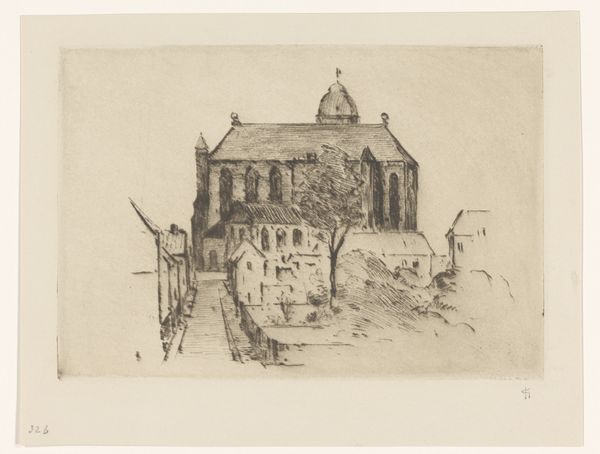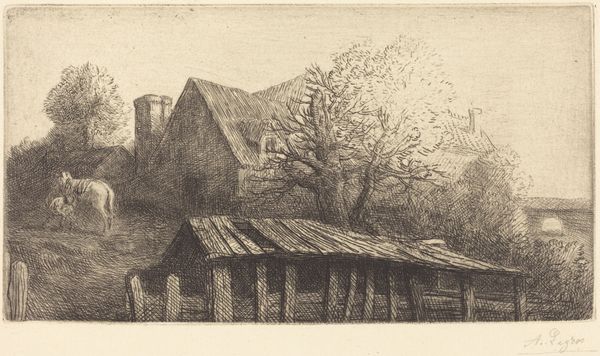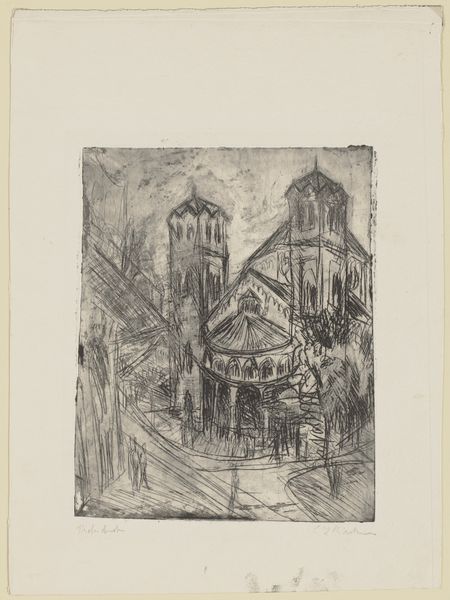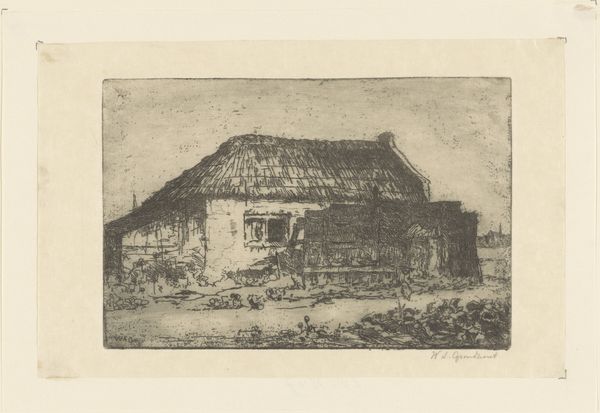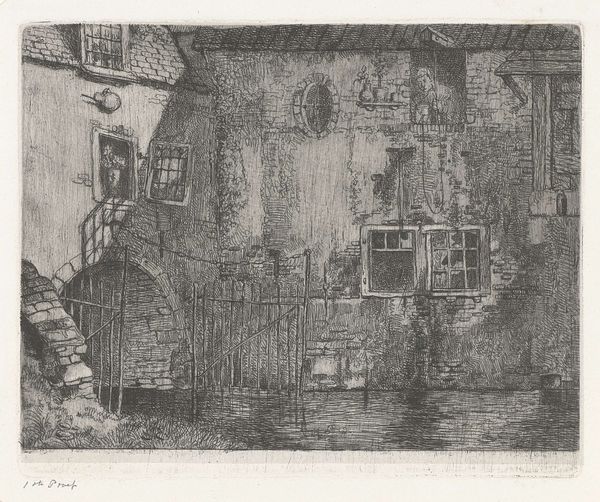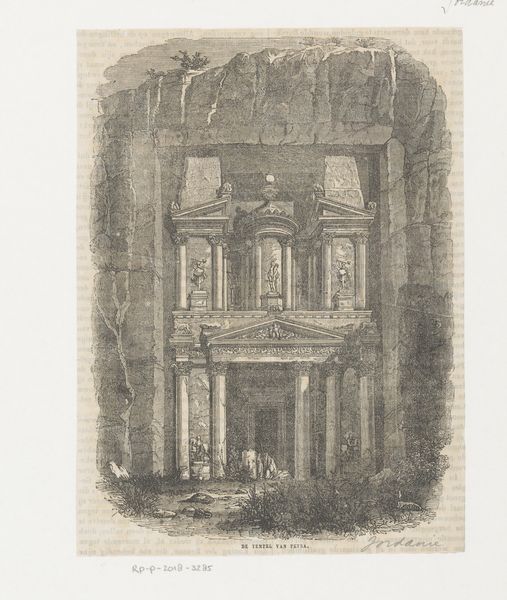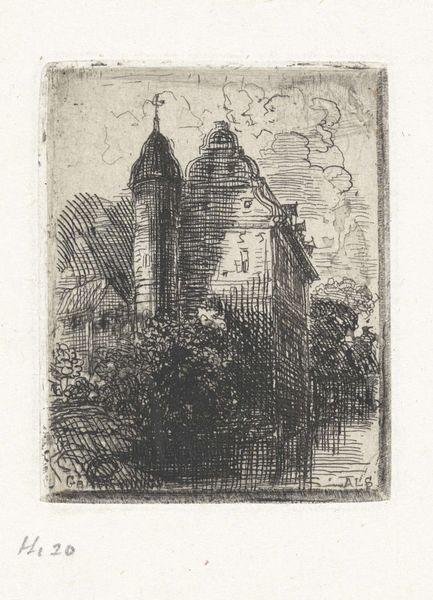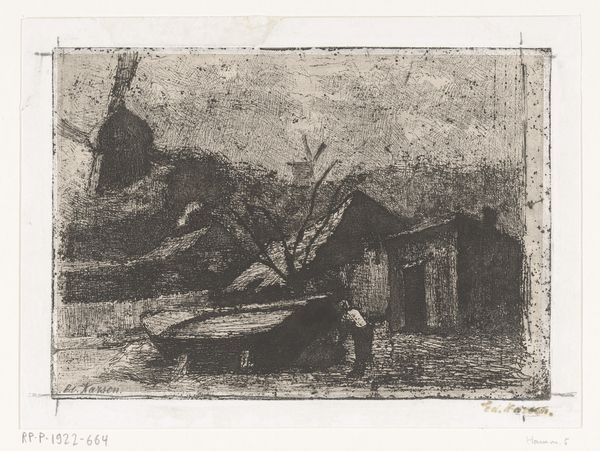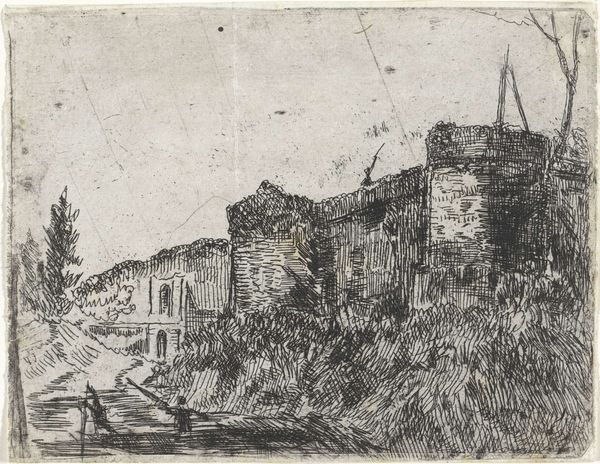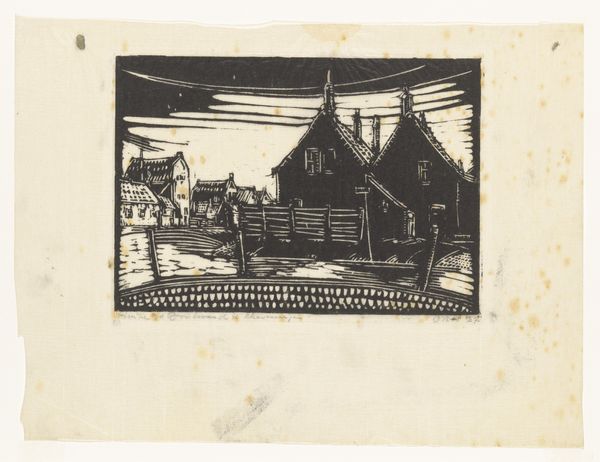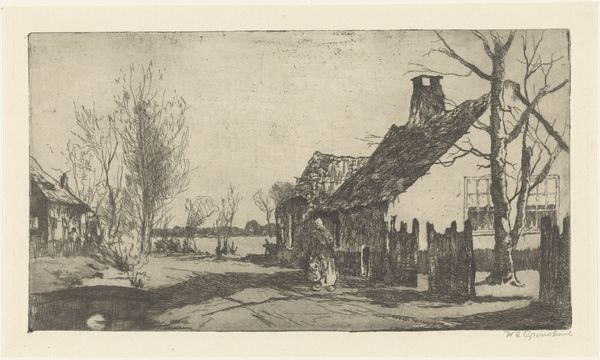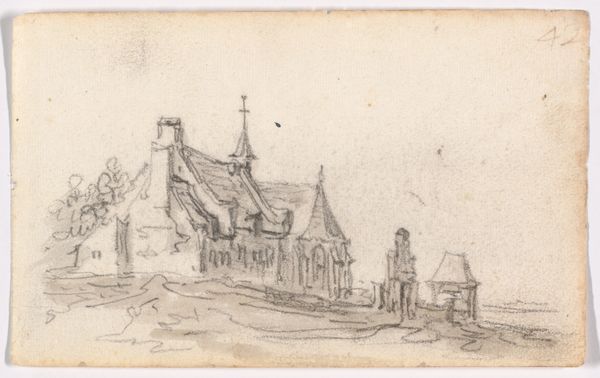
drawing, print, etching
#
drawing
#
aged paper
#
medieval
# print
#
etching
#
landscape
#
cityscape
#
realism
Dimensions: height 108 mm, width 155 mm
Copyright: Rijks Museum: Open Domain
Editor: So this etching is called “Dominicanenkerk te Maastricht” by Alexander Schaepkens, and it's dated sometime between 1830 and 1899. The heavy lines make the church feel massive and permanent, but there's a certain melancholy to it as well. How do you read this image, considering the period it was made? Curator: Well, looking at the piece through a critical lens, particularly concerning issues of power and representation, several things come to mind. The artist’s focus on the Dominican church—an institution historically intertwined with structures of authority—invites us to consider the role of religious institutions within 19th-century society. How did the church function as a site of both spiritual solace and social control? Editor: That’s a good point. It does seem like these buildings represented stability. Curator: Exactly. And in depicting the Dominican church, Schaepkens might be inadvertently reinforcing certain power dynamics. Realism, which is the identified style, emerged during a time of great social upheaval, it attempted to depict reality, but often did so from a particular social standing. Who’s reality is being presented, and whose is omitted from view? Also, think about what this building represented regarding colonialism and the global expansion of European powers. Editor: So, the image of the church might evoke the legacy of colonialism and cultural dominance? Curator: Precisely. Consider the relationship between the colonizer and the colonized in this context. This print offers an opportunity to delve deeper into a dialogue about identity, historical narratives and accountability within art history. The print invites discussion about power and architecture. What kind of resistance do we want to see? Editor: I never thought of a simple building as being so loaded! I’m going to remember to look at who is in power when I see architectural art in the future. Curator: Absolutely. It’s about seeing these images as cultural artifacts, prompting critical engagement with the past, not just pretty pictures.
Comments
No comments
Be the first to comment and join the conversation on the ultimate creative platform.
